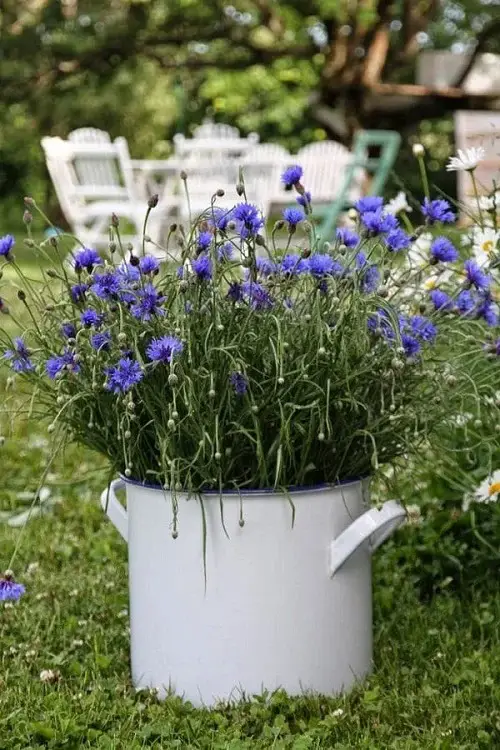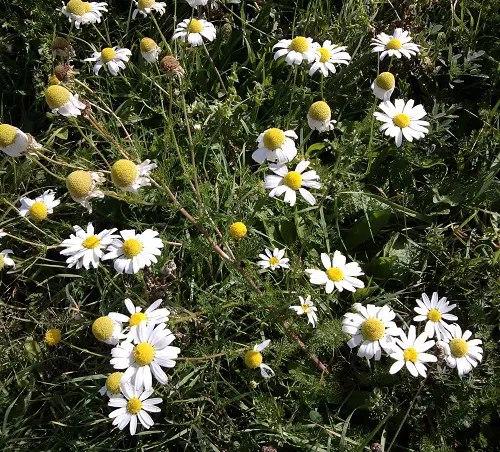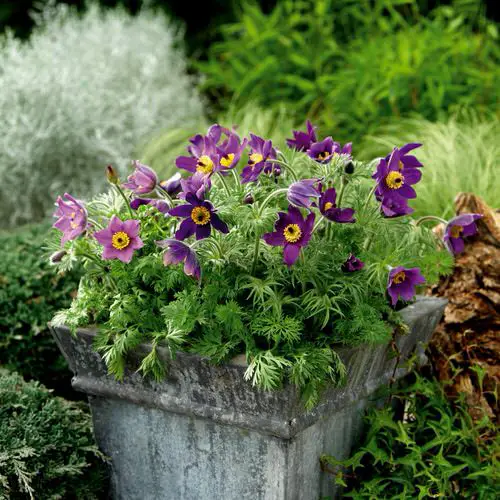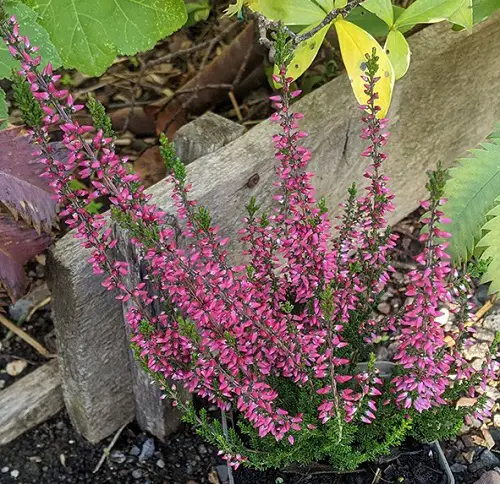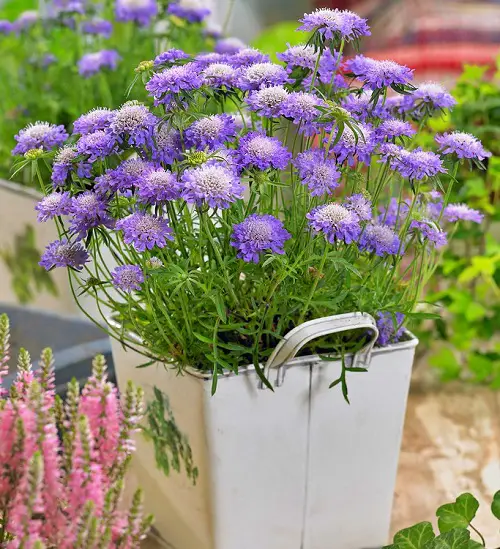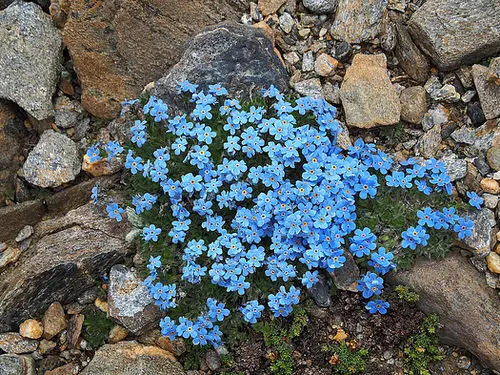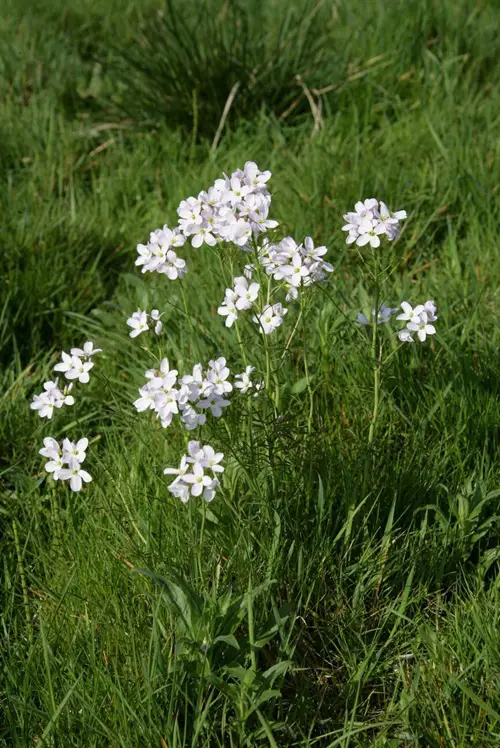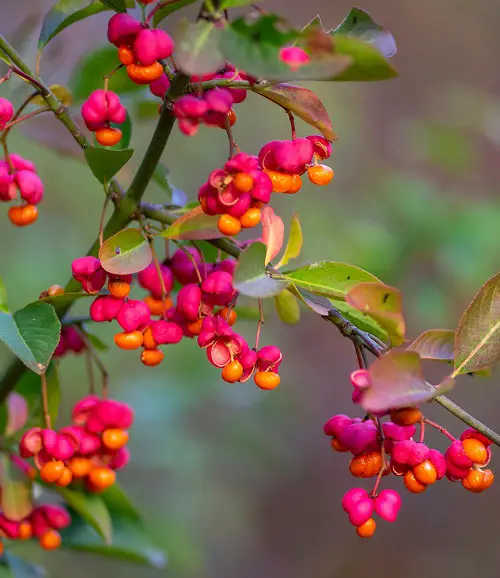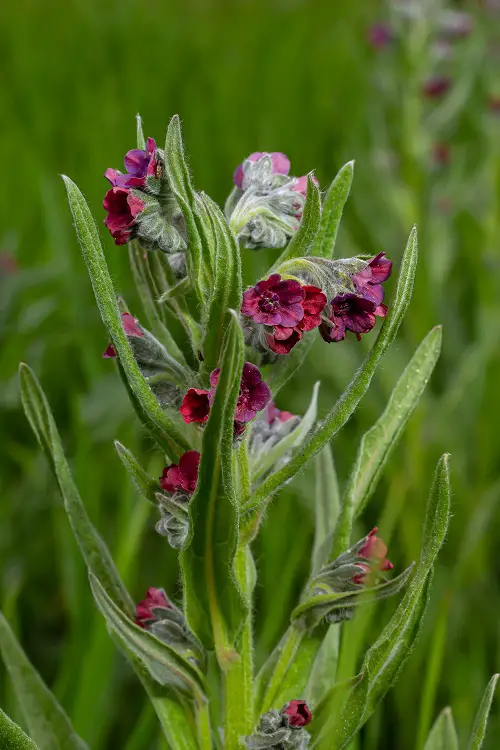These German Flowers, including some of the native European species, can thrive easily in your garden, too!
From the eye-catching Edelweiss that thrives in the majestic Alps to bright and playful Cornflowers that are a common sight in the lush countryside, all German flowers have a story to tell, which we will discover in this article!
Best German Flowers
In this list, most of the flowers are native to Europe because Germany is geographically situated within this region.
1. German Iris
Botanical Name: Iris germanica
German Iris is native to Europe and is available in various colors. It has become a central part of German landscapes due to its large and fragrant blooms.
2. Cornflower
Botanical Name: Centaurea cyanus
These German flowers are also popular as bachelor’s button and are the country’s national flower. They come in blue, red, pink, purple, and white hues.
3. Edelweiss
Botanical Name: Leontopodium alpinum
Edelweiss is a perennial plant with star-like blooms and white petals. It is native to European mountains, particularly the Alps, and can even thrive in harsh environments.
4. German Chamomile
Botanical Name: Matricaria chamomilla
This summer, plant these blooms in your herb garden! Their fragrant white flowers will add a scent to the surroundings, and you can also use them in tea, crafts, and potpourris.
5. Pasque Flower
Botanical Name: Pulsatilla vulgaris
These German flowers bloom in spring, and their violet blossoms represent the arrival of Easter, saying that the celebration is just around the corner!
6. Heath
Botanical Name: Calluna vulgaris
Heath is a low-growing shrub with small, pink-purple flowers that form carpets wherever it grows. During summer, you can spot it in the moorlands in Germany and other parts of Europe.
7. Cowslip
Botanical Name: Primula veris
The Cowslip’s bell-like yellow flowers contrast really well with its dark green foliage. The plant is quite a common sight across Europe.
8. Bee Orchid
Botanical Name: Ophrys apifera
Native to Europe, including Germany, you can spot these quirky flowers in grasslands, meadows, and open woodlands. They do look like bees, don’t they?
9. Alpine Aster
Botanical Name: Aster alpinus
These beautiful daisy-like flowers, typically blooming from late spring to early summer, are found in Germany’s alpine meadows, rocky slopes, and mountainous regions.
10. Snowdrop
Botanical Name: Galanthus nivalis
These German flowers have a pure white hue that can add elegance to any space. People associate these blooms with hope, purity, and the arrival of spring.
12. Love-In-A-Mist
Botanical Name: Nigella damascena
Though not native to Germany, you can easily spot it growing abundantly there. A notable characteristic is its ability to self-seed – plant it once, and it will return every year!
13. Forget-Me-Not
Botanical Name: Myosotis scorpioides
According to a medieval German tale, a knight fell into a river while picking flowers for his lover and shouted “Forget me not.” That’s how this German flower got its name!
14. Lily of the Valley
Botanical Name: Convallaria majalis
This fragrant flower typically blooms in April-May and holds a special significance in Germany. It is used in spring festivals and May Day celebrations to symbolize happiness.
Caution: Do not be deceived by its beauty, as it is highly toxic.
15. Cuckoo Flower
Botanical Name: Cardamine pratensis
This herbaceous plant is native to Germany and is used by locals in salads and as a treatment for coughs and colds.
16. European Spindle
Botanical Name: Euonymus europaeus
Native to Europe, European Spindle is widely grown in Germany. The red and orange flowers of this plant are small in size and grow best in full sunlight.
Caution: The fruits of this plant are toxic.
17. Houndstongue
Botanical Name: Cynoglossum officinale
This plant’s name is inspired by its long, greyish leaves that look like a dog’s tongue. How about adding it to your cottage garden or wildflower collection?



